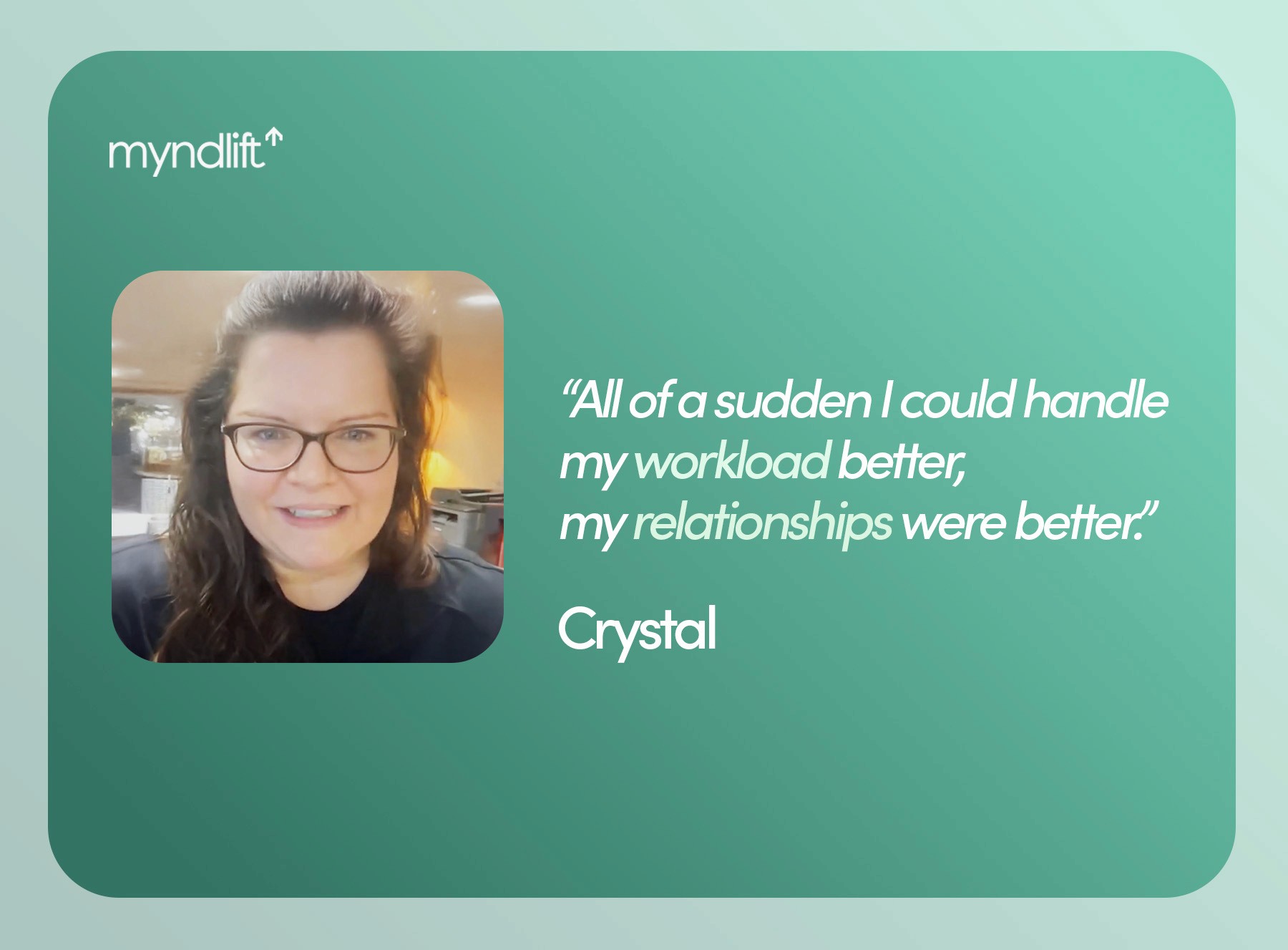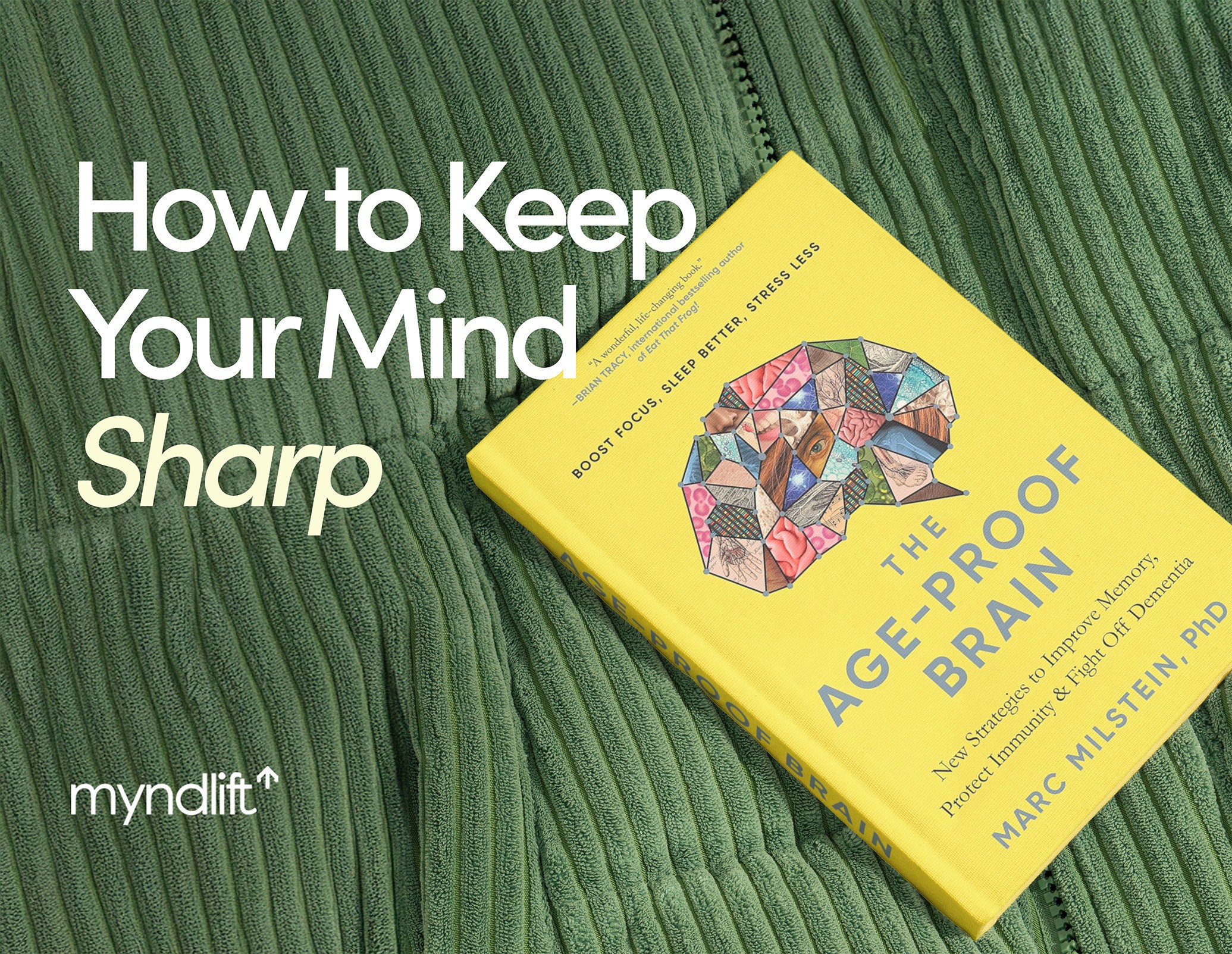Nearly 50 million Americans, or 1 in 5, are struggling with mental health conditions. And more than half of them are not getting the support and care they need.
That's why Dr. Julie Smith, a clinical psychologist and bestselling author, decided to write a book packed with skills that are taught in therapy. Drawing on years of clinical experience, she revealed the most helpful strategies from her very own therapist toolkit, started posting valuable mental health advice on social media, and quickly became an online sensation.
The result?
Her book Why Has Nobody Told Me This Before was nothing short of a grand slam; it spent four weeks at the top of bestseller lists, Dr. Julie Smith currently has more than three million followers on TikTok, and the number of people that benefit from her advice continues to rise.
What makes Why Has Nobody Told Me This Before so helpful?
Powerful coping techniques that tackle everyday issues and offer practical solutions make Why Has Nobody Told Me This Before applicable to almost anyone.
Techniques described in this book can help you build resilience, learn how to deal with criticism, improve self-confidence, manage anxiety, or cope with depression.
And even though the book might not be a replacement for working with a trained professional, these bite-sized, easy-to-digest lessons can help you improve your mental health by making small changes to your everyday behavior.
In order to support you on your self-improvement journey, we cherry-picked three key learnings from the book that we found particularly helpful.
Lesson 1: You can take power away from negative thoughts
Negative thoughts, also known as thought biases, happen to many people to varying degrees. They're subconscious errors in thinking that might lead you to misinterpret information from the world around you.
For example, you might dwell on a single negative comment made by your manager and view the professional relationship as hopelessly lost while failing to acknowledge years of positive comments and experiences preceding said comment.
To be sure you respond to thought biases in a manner that is driven by factual, not emotional, evidence, aim to recognize when you're falling into the bias trap by:
Reflecting on thought biases cold-headed: High emotional states can make it difficult to think properly. So try reflecting on thought biases after intense emotions subside. Try counting slowly to ten in order to let your rational mind catch up with your feelings. If you still feel distressed by the time you reach number ten, start counting again until you feel calm.
Starting a mindfulness practice: Being mindful means paying attention to the present moment without judgment, but with awareness of thoughts, feelings, and bodily sensations that arise. By practicing mindfulness, you can learn how to allow your thoughts to be present but be able to choose which ones you'll give your time and attention to. Here are some ideas for different types of meditation exercises.
Reframing your thoughts: Once you learn to notice thought biases, make sure to respond to them by using cognitive restructuring techniques. Cognitive restructuring techniques are focused on recognizing and identifying thoughts as they occur and learning to step back from them if they weren’t found valuable. By practicing these techniques, you’ll have the necessary tools to expose negative thoughts and better deal with them as they arise.
Practicing gratitude: According to Dr. Smith, every time you practice gratitude, your brain gets better at turning its attention to things that create pleasant emotional states. The more practice you get, the easier it becomes to use that positive thinking in other situations. On a daily basis, try writing down three things that you're grateful for, and spend a few minutes reflecting on them and allowing yourself to feel the positive emotions that accompany them.
Lesson 2: You can deal with self-criticism by practicing shame resilience
Not all criticism is negative. For instance, when feedback focuses on a specific behavior, you might feel guilty, which will likely prompt you to correct your mistakes. However, when criticism attacks your personality and your sense of worth as a person, you might feel that in the form of shame.
Shame is an intensely painful feeling, because, more often than not, it’s accompanied by other negative emotions like anger or disgust. This can make you prone to self-criticism, self-denigration, and blame.
And, although we cannot eradicate feelings of shame altogether, you can build resilience to it.
According to Dr. Smith, being able to experience shame and come back from it without losing your sense of self-worth involves:
Getting to know what triggers shame in you: The first step in overcoming shame is learning to recognize when you are in the grip of shame so that you can name it and find your way through it. Anything that you link to your self-worth, such as your creativity or professional success, has the power to give rise to shame. Try journaling about past events in which you felt ashamed and note any feelings or thoughts and how you reacted to them.
Paying attention to how you talk to yourself after criticism: Try to respond to yourself with respect and compassion, even if you feel like you’re letting yourself “off the hook” or that you don’t deserve it. As Dr. Smith states in the book, “if you want a man to get up off the ground, you have to stop beating him.” You can try asking yourself what you'd say to a loved one in your situation. By practicing self-compassion, you'll be able to listen to criticism and decide which part of it you'll take on board and use to your advantage as a learning experience and which part will offer you nothing but dents in your self-esteem.
Talking about the shame itself: Secrets, silence, and self-judgment might intensify feelings of shame. Try sharing your experience with someone you trust. By discussing your shame aloud, you may find that you’ve taken away its power over you and, hopefully, come to the realization that your feelings of shame are not justified. And, if you did do something shameful, sharing it with someone else can help create space for forgiveness. This way, you’ll be able to deal with present shortcomings in a way that improves your future actions rather than hinders them.
Lesson 3: You can build confidence by changing your relationship with fear
According to Dr. Smith, one of the biggest misconceptions about self-confidence is that it means living fearlessly. But the key to building confidence is quite the opposite.
You don't have to put yourself in a situation that causes panic or terror. Instead, try stepping into fear by making small steps toward a situation that scares you. This way, instead of letting fear hold you back, you can use it as a source of strength and motivation.
Dr. Smith suggests you try to change your relationship with fear by following these steps:
Step 1: Write down a situation in which you would like to build more confidence. For example, social gatherings. Then pick a social event you fear the most and place it at the top of the list. For instance, you might put parties at the top.
Step 2: List any variation of the situation that’s on top of your list that may feel more manageable but still challenging. For example, a party at which you know everyone; might be slightly more manageable.
Step 3: The next variation should be even easier. For instance, a small gathering of close friends or going to a café with a trusted friend.
Step 4: Once you have your list, don't start at the top. Instead, take the scenario that presents a challenge but still feels possible. Then repeat that behavior as often as you can. Once your confidence grows and that situation becomes a comfort zone, you can move up to the next challenge.
According to Dr. Smith, the tools presented in this book are mostly taught in therapy, but they are not therapy skills. They are life skills. Tools that may help every single one of us to navigate through difficult times and flourish.
But using these tools properly requires practice. So, “if you miss the nail with the hammer every now and then,” come back and try again. Keep reaching out for your toolbox, continue mastering the art of resilience, and then share your knowledge with the world. Make someone wonder, "Why has nobody told me this before?"
Multiple Myndlift users report monthly changes in their behavior and lifestyle. Get matched with a Myndlift Provider by finding one in your area or enrolling in our Total Remote program.
About the author:
Dubravka Rebic
Dubravka Rebic puts a lot of time and energy into researching and writing in order to help create awareness and positive change in the mental health space. From poring over scientific studies to reading entire books in order to write a single content piece, she puts in the hard work to ensure her content is of the highest quality and provides maximum value.
About the checker:
Carola Tuerk, Ph.D.
Carola is a cognitive neuroscientist and a scientific consultant for Myndlift. In her research, she is particularly interested in how early life experiences shape brain development and mental health with a particular focus on children. She has obtained a BSc in psychology, an MSc in neuroscience, and a PhD in cognitive neuroscience and is passionate about brain health. In her free time, Carola likes to exercise or play music to relax.
References
Reinert, M, Fritze, D. & Nguyen, T. (October 2021). “The State of Mental Health in America 2022” Mental Health America, Alexandria VA.
Smith, J. (2022). Why has nobody told me this before? Unabridged. [New York], HarperCollins.





